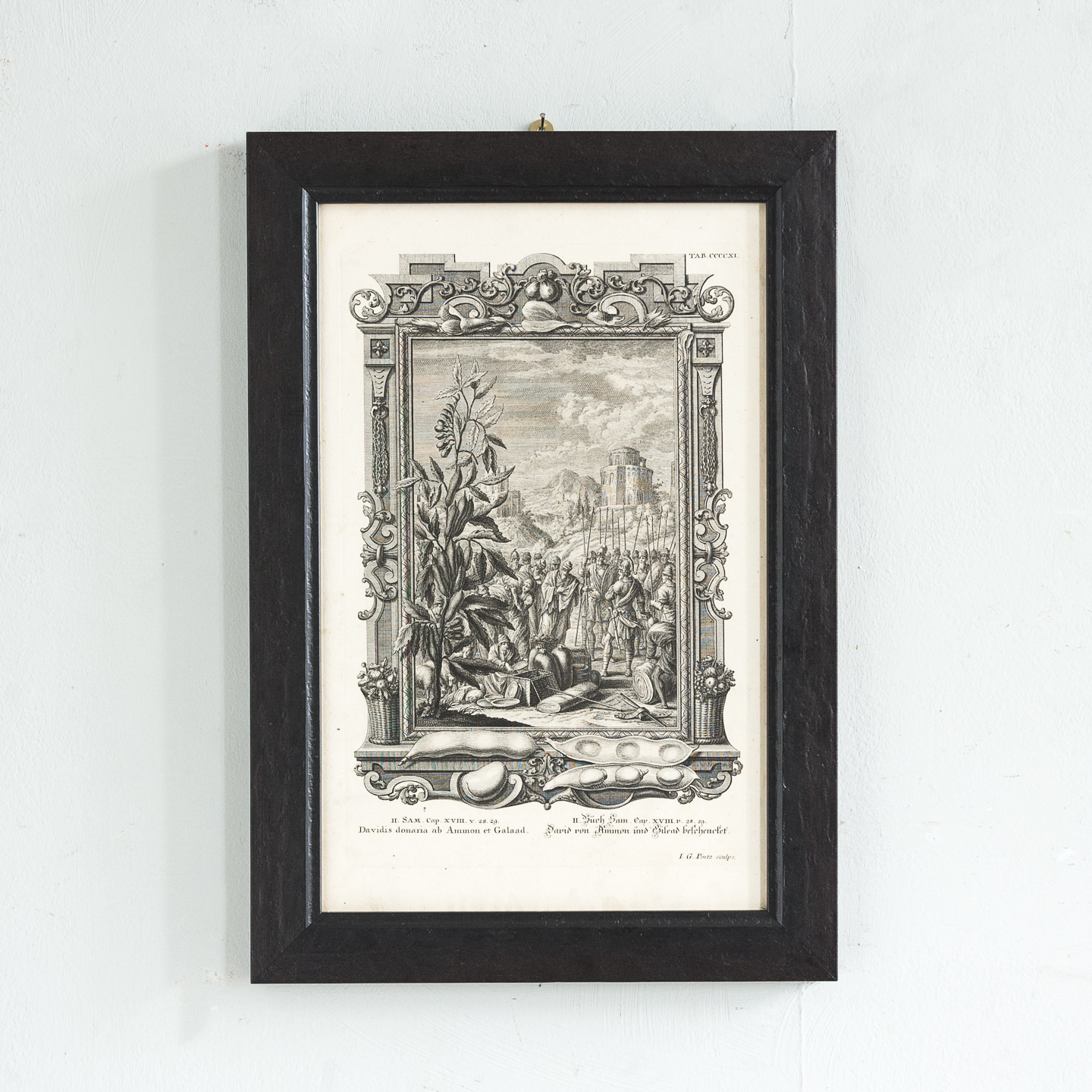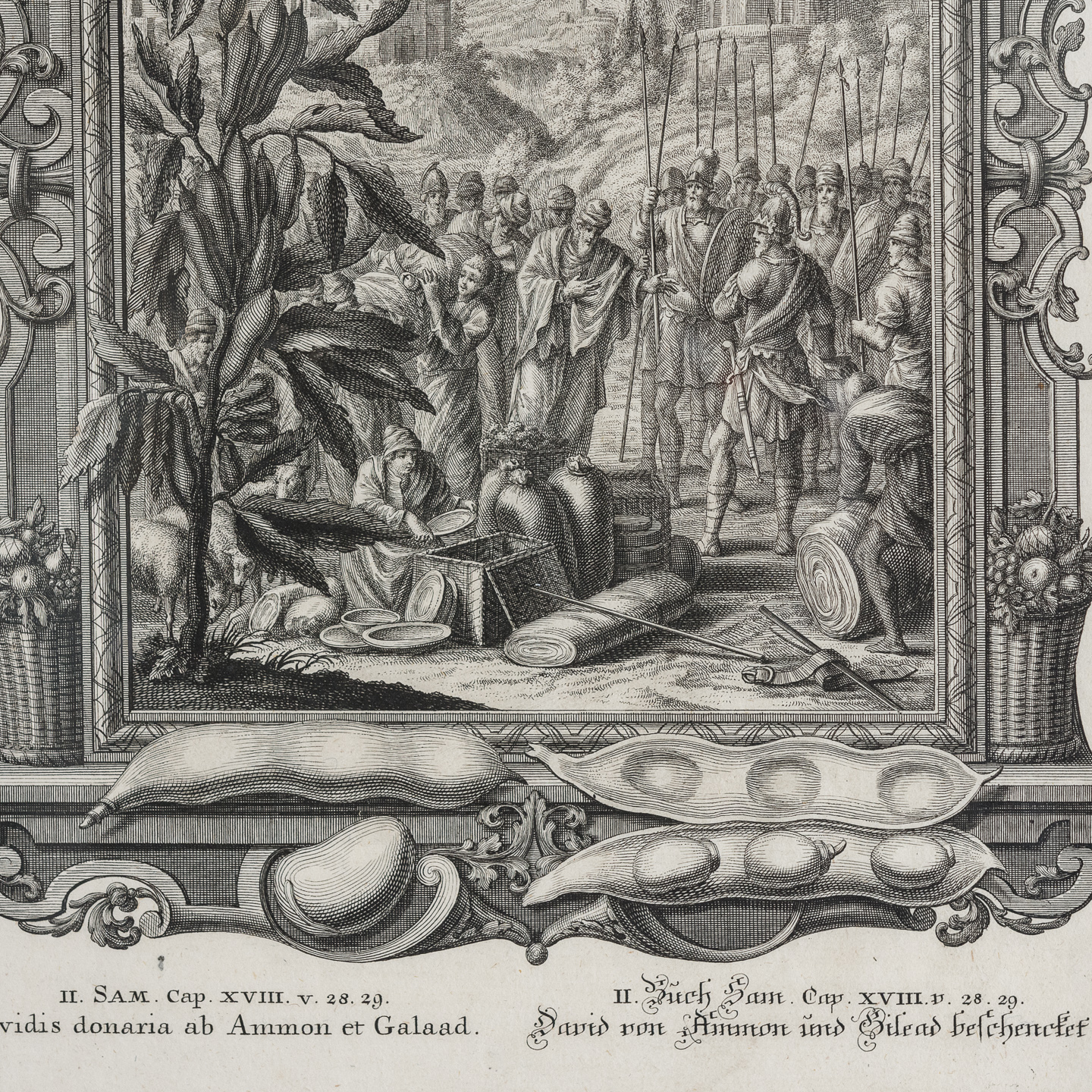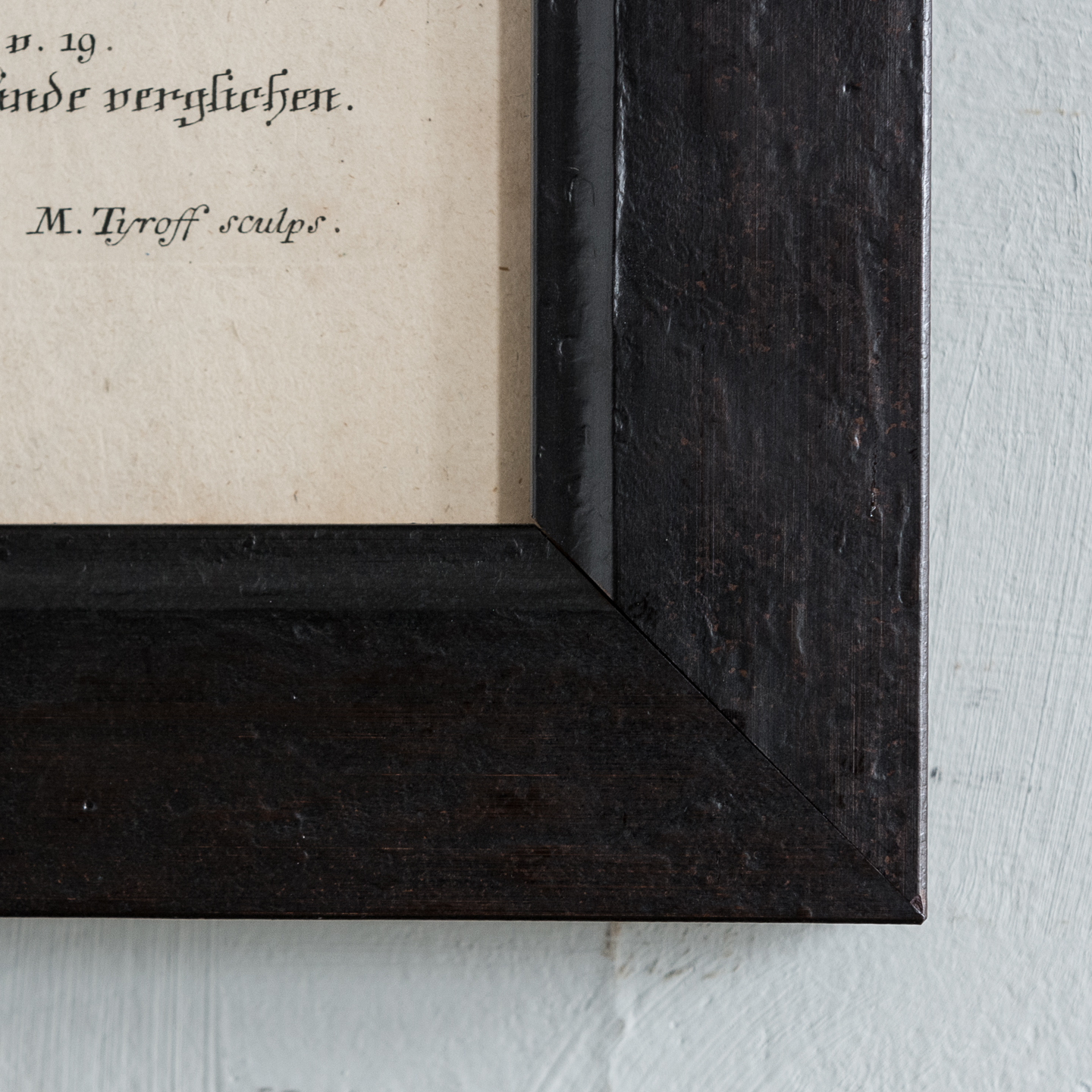Sacred Physics by Johann Jakob Scheuchzer,
original copper-engraved prints,
£140 each
In stock
Johann Jakob Scheuchzer was a Swiss naturalist and professor of mathematics working in the early 18th century; a time when it was customary to regard the Old Testament as a perfectly accurate description of the history of the earth. Trained as a physician, Scheuchzer travelled extensively and put together one of the largest fossil collections in early 18th-century Europe. He described many of the fossil plants he collected in 1709 in Herbarium of the Deluge and believed the plants had all perished in the biblical flood. In 1731, he published his masterwork: Physica Sacra, a detailed explication of events in the Bible in terms of physics, medicine, and natural history. The work is so profusely illustrated with copper-plate engravings that it became known as the copper-plate bible. Each illustration references a specific book, chapter and verse of the 1611 edition of the King James Bible. Scheuchzer’s recognition that fossils were the remains of sea animals and that the biblical time frame needed extension was a step on the way to Lyell and Darwin.




